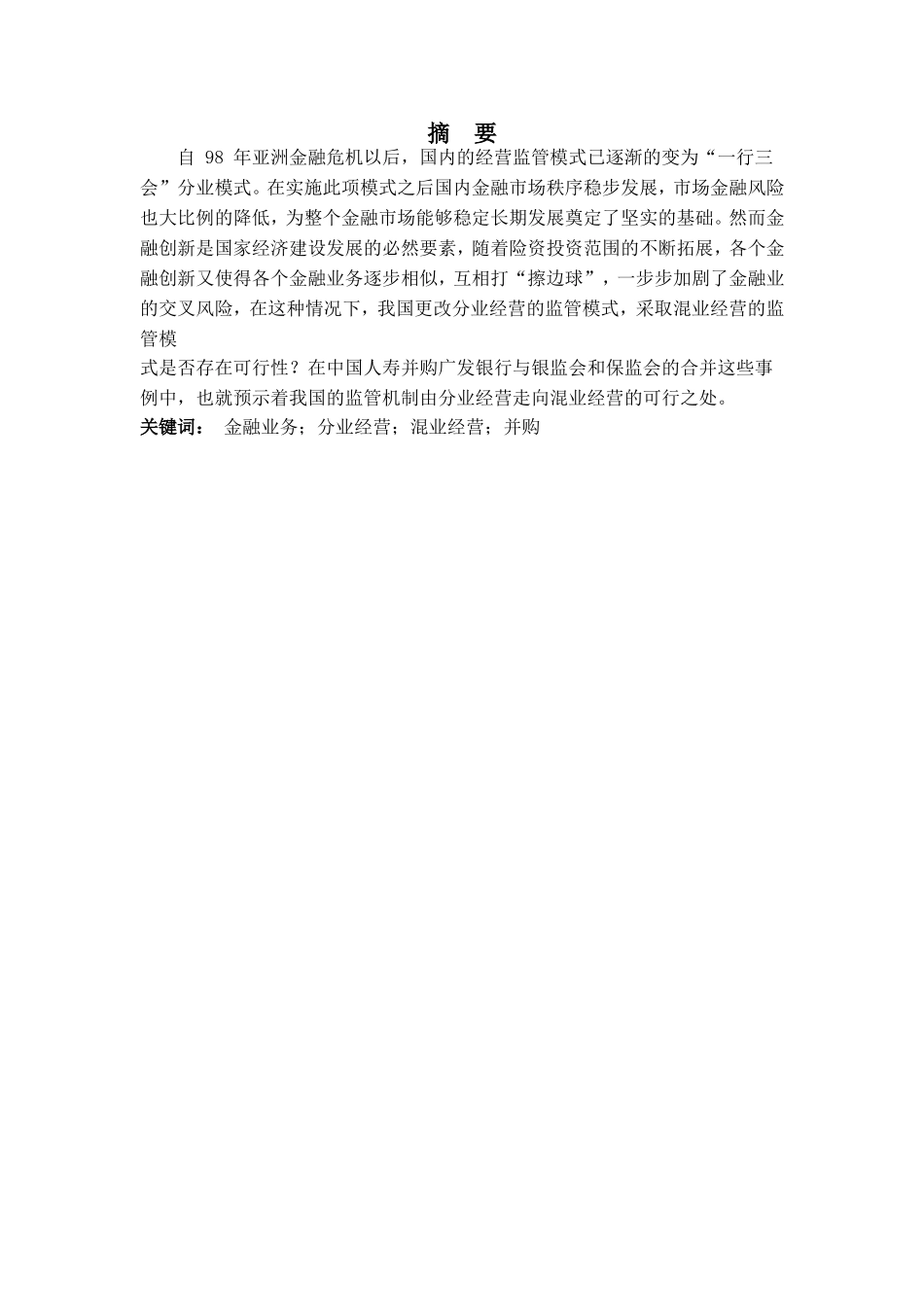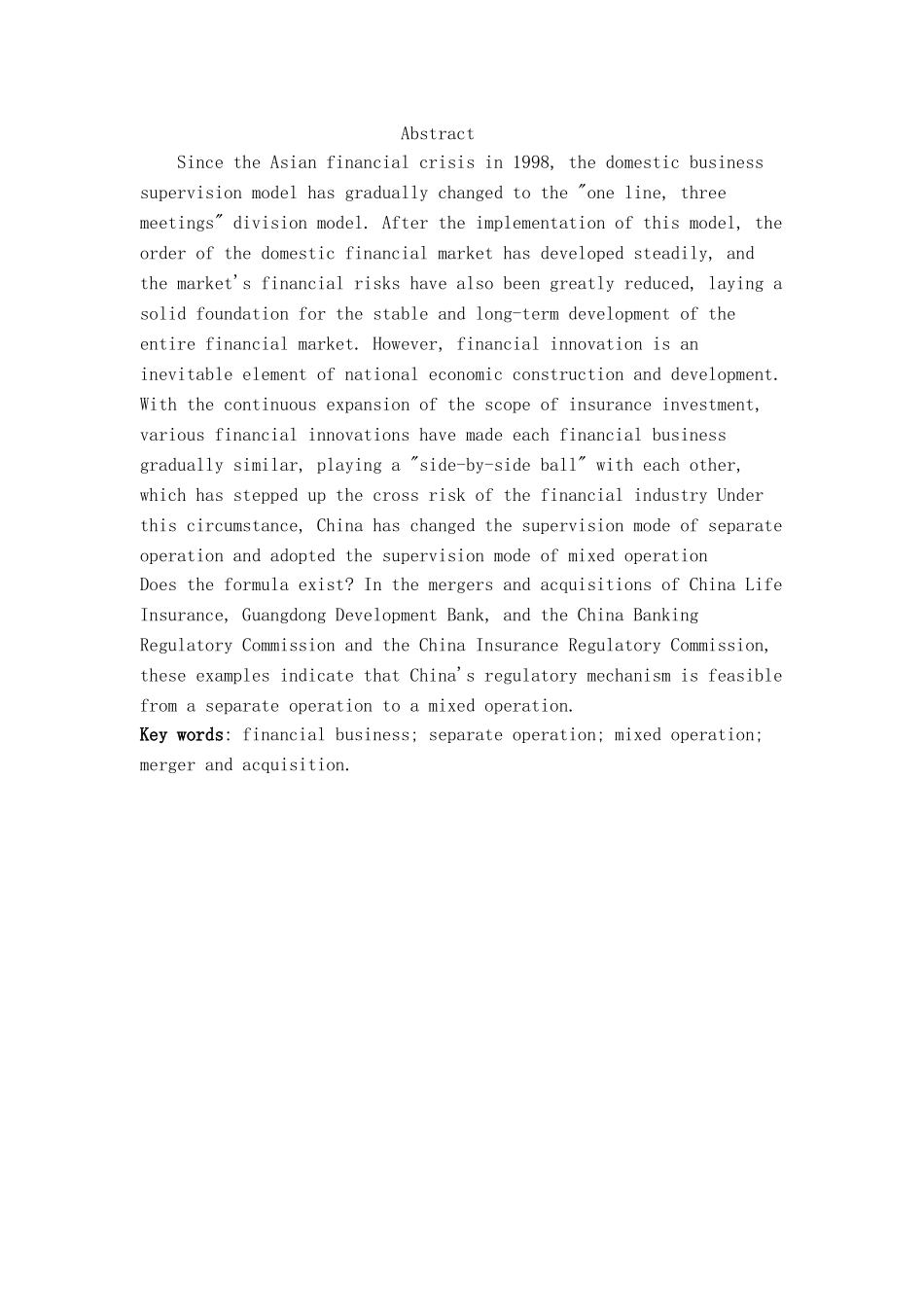我国金融全面混业监管的可行性研究——以中国人寿并购广发银行例摘 要自 98 年亚洲金融危机以后,国内的经营监管模式已逐渐的变为“一行三会”分业模式。在实施此项模式之后国内金融市场秩序稳步发展,市场金融风险也大比例的降低,为整个金融市场能够稳定长期发展奠定了坚实的基础。然而金融创新是国家经济建设发展的必然要素,随着险资投资范围的不断拓展,各个金融创新又使得各个金融业务逐步相似,互相打“擦边球”,一步步加剧了金融业的交叉风险,在这种情况下,我国更改分业经营的监管模式,采取混业经营的监管模 式是否存在可行性?在中国人寿并购广发银行与银监会和保监会的合并这些事例中,也就预示着我国的监管机制由分业经营走向混业经营的可行之处。关键词: 金融业务;分业经营;混业经营;并购Abstract Since the Asian financial crisis in 1998, the domestic business supervision model has gradually changed to the "one line, three meetings" division model. After the implementation of this model, the order of the domestic financial market has developed steadily, and the market's financial risks have also been greatly reduced, laying a solid foundation for the stable and long-term development of the entire financial market. However, financial innovation is an inevitable element of national economic construction and development. With the continuous expansion of the scope of insurance investment, various financial innovations have made each financial business gradually similar, playing a "side-by-side ball" with each other, which has stepped up the cross risk of the financial industry Under this circumstance, China has changed the supervision mode of separate operation and adopted the supervision mode of mixed operationDoes the formula exist? In the mergers and acquisitions of China Life Insurance, Guangdong Development Bank, and the China Banking Regulatory Commission and the China Insurance Regulatory Commission, these examples indicate that ...


